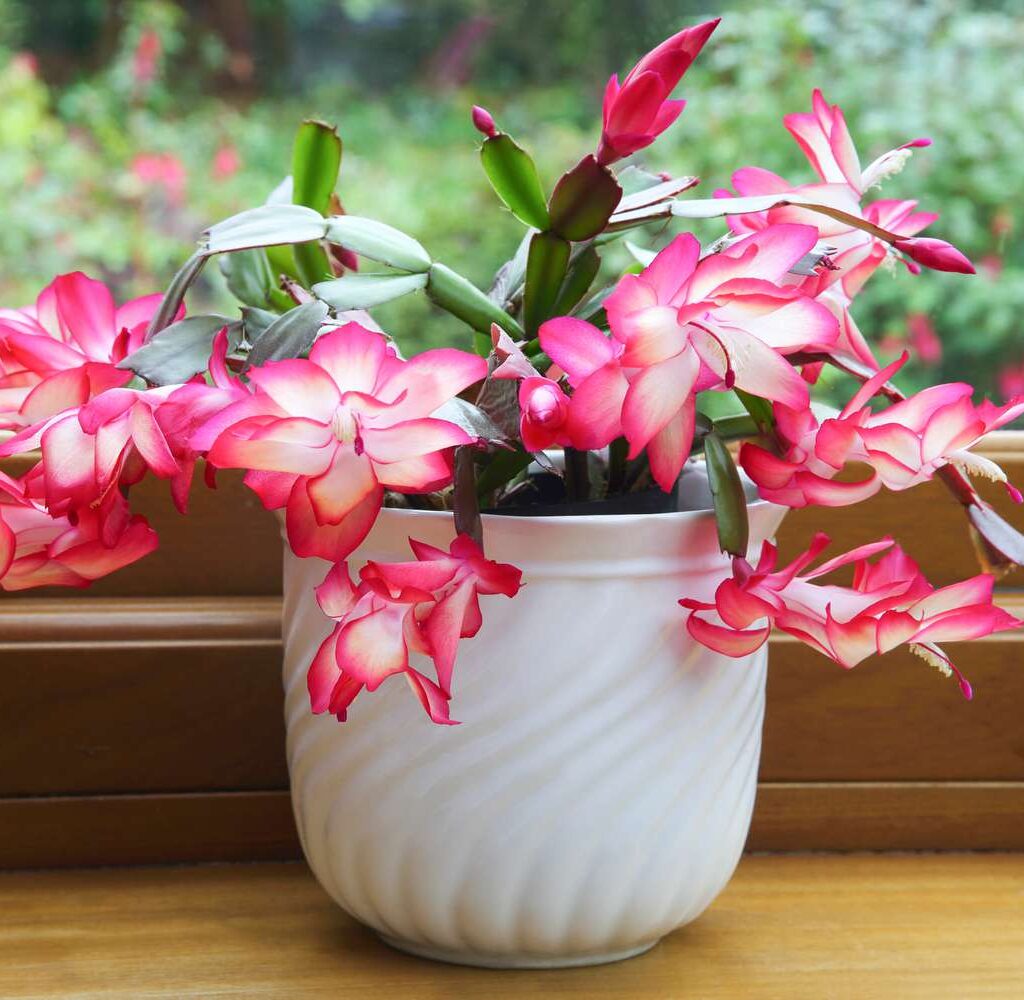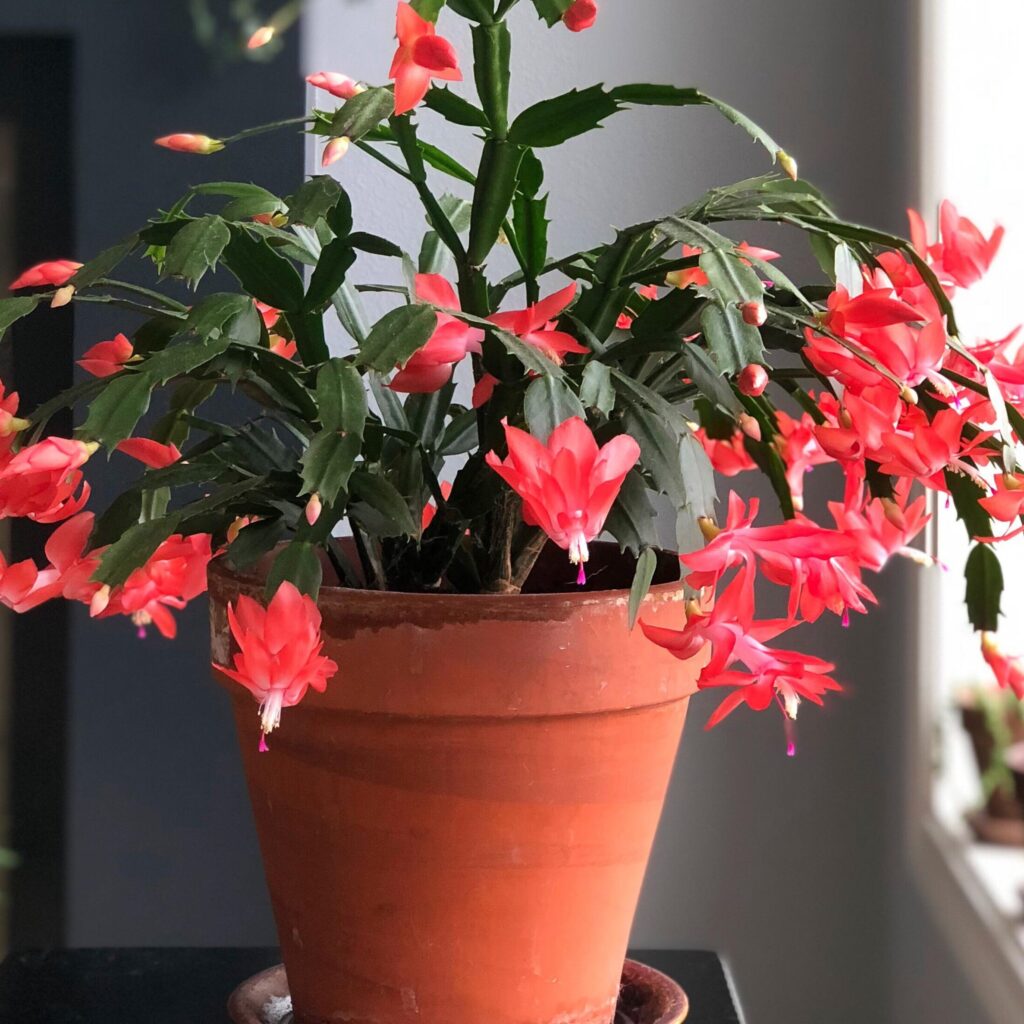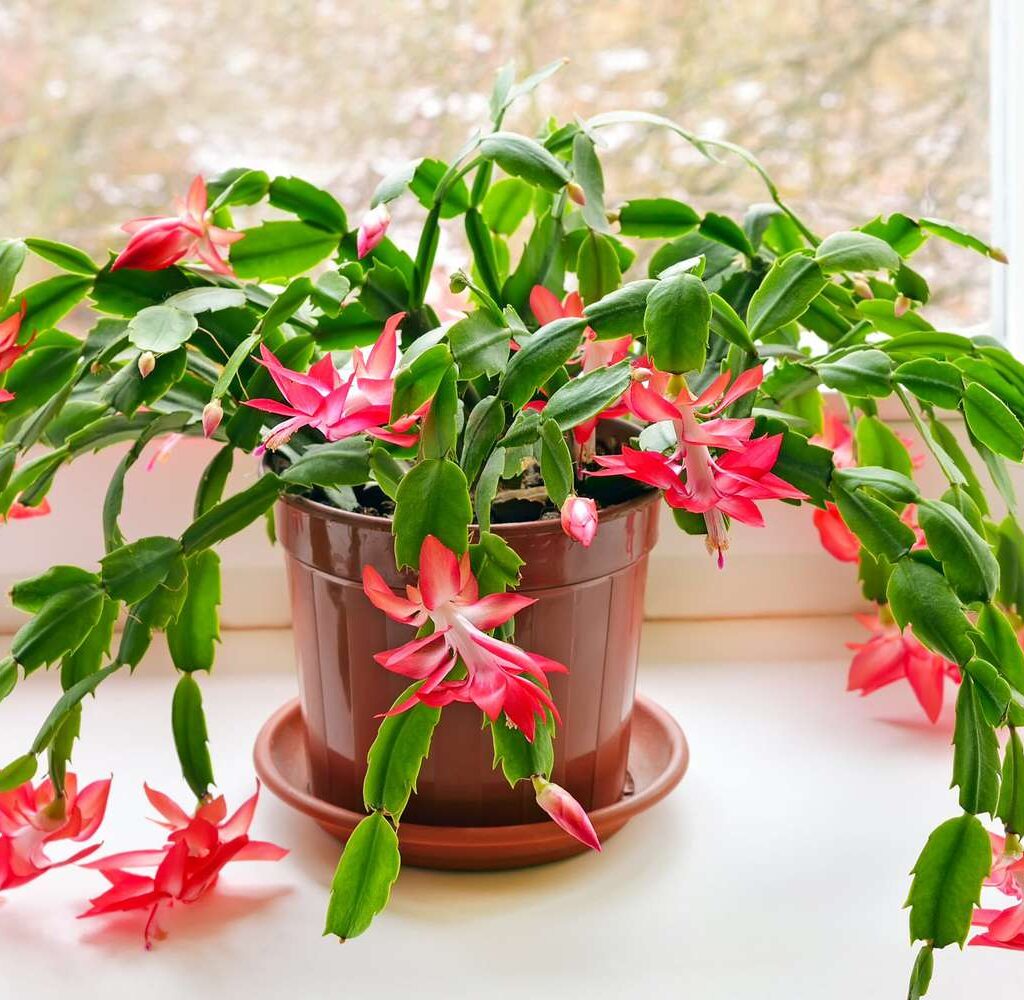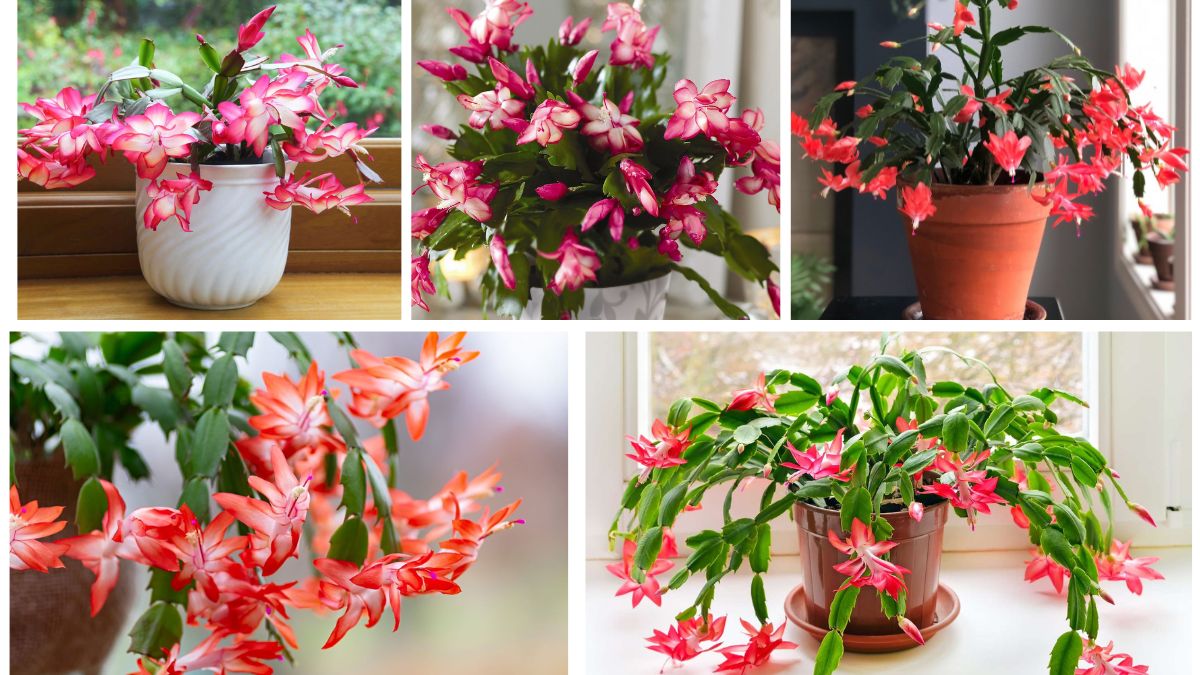The Christmas cactus (Schlumbergera spp.) is a beloved holiday houseplant that brightens homes with its colorful blooms in winter, just in time for the festive season. Unlike the typical desert cactus, this tropical plant thrives in humid, shaded environments and requires a unique care routine to bloom successfully. With its long-lasting flowers, lush foliage, and resilience, the Christmas cactus makes an excellent addition to any indoor plant collection.
This guide will walk you through everything you need to know—from planting and care tips to encouraging blooms—so your Christmas cactus thrives year after year.
Understanding the Christmas Cactus

Before diving into the step-by-step process, it’s important to understand the plant itself:
- Origin: Native to Brazil’s coastal mountains, where they grow in rainforests attached to tree branches.
- Habit: An epiphytic plant that absorbs moisture and nutrients from the air and decomposed organic matter.
- Unique Bloom Cycle: Flowers appear during short daylight periods (around late fall to early winter), making it a symbol of Christmas festivities.
Unlike most cacti, the Christmas cactus prefers shade, humidity, and consistent watering—traits that make it more similar to tropical plants than succulents.
Step 1: Choosing and Preparing the Right Pot

The first step to growing a healthy Christmas cactus is selecting the proper container.
- Pot Size: Choose a pot that’s just slightly larger than the root ball. A tight pot encourages better blooming.
- Material: Terra cotta or ceramic pots with drainage holes are ideal for preventing root rot.
- Drainage: Ensure good drainage with a layer of pebbles at the bottom if needed.
Christmas cacti don’t like to be waterlogged, so the potting setup must allow excess water to drain away.
Step 2: Selecting the Right Soil

The soil mix plays a crucial role in the plant’s health.
- Preferred Mix: A lightweight, well-draining soil is best. You can use a commercial cactus mix with added organic matter or prepare your own mix with:
- 2 parts regular potting soil
- 1 part coarse sand or perlite
- 1 part peat moss or compost
This ensures both aeration and moisture retention, mimicking the plant’s natural rainforest environment.
Step 3: Planting Your Christmas Cactus
- Gently remove the cactus from its nursery pot.
- Loosen the roots carefully without damaging them.
- Place the plant in the new pot, filling in with prepared soil around the roots.
- Press soil lightly to secure the plant but avoid compacting it.
- Water thoroughly to help settle the soil.
Step 4: Finding the Right Location
Christmas cacti thrive indoors, but placement is key.
- Light Needs: Bright, indirect sunlight is ideal. Direct sunlight can scorch the leaves.
- Temperature: Maintain temperatures between 60–70°F (15–21°C) for optimal growth.
- Seasonal Placement: During the flowering season, cooler nighttime temperatures (50–55°F or 10–13°C) encourage bud formation.
Avoid placing the plant near heaters, air conditioners, or drafty windows.
Step 5: Watering and Humidity
Unlike desert cacti, the Christmas cactus prefers consistent moisture.
- Watering Schedule: Water when the top inch of soil feels dry. Typically, this means every 1–2 weeks depending on your home’s humidity.
- Humidity Needs: Since they come from rainforests, they appreciate extra humidity.
- Use a humidity tray with pebbles and water.
- Mist leaves occasionally, especially in dry climates.
Overwatering is the most common mistake, so always let the soil dry slightly before watering again.
Step 6: Fertilizing for Healthy Growth
Feeding your plant ensures vigorous growth and vibrant flowers.
- Spring to Summer: Fertilize monthly with a balanced, water-soluble houseplant fertilizer (e.g., 20-20-20).
- Late Summer to Fall: Switch to a fertilizer with higher potassium (e.g., 10-30-20) to promote bud development.
- During Bloom: Avoid fertilizing while it flowers.
Step 7: Encouraging Blooms

Getting your Christmas cactus to bloom requires some seasonal adjustments.
- Short Daylight Treatment: From September to November, provide 12–14 hours of darkness each night and bright indirect light during the day.
- Cool Nights: Keep nighttime temperatures cooler, around 50–55°F.
- Balanced Watering: Reduce watering slightly during the pre-bloom phase, then resume normal care once buds form.
- Avoid Stress: Do not move the plant once buds appear, as this can cause them to drop.
With the right care, blooms will last 4–6 weeks.
Step 8: Pruning and Shaping
Pruning not only improves the plant’s appearance but also encourages branching and more flowers.
- When to Prune: Best done after flowering, in late winter or early spring.
- How to Prune: Gently twist off a few stem segments (never cut with scissors).
- Propagation: These cut segments can be rooted in soil or water to grow new plants.
Step 9: Repotting the Christmas Cactus
Repotting is required every 2–3 years when the plant outgrows its container.
- Timing: Best done in spring after flowering has ended.
- Steps: Move to a slightly larger pot with fresh soil mix.
- Tip: Avoid over-potting, as it can reduce flower production.
Step 10: Dealing with Common Problems
Even with proper care, Christmas cacti can face challenges.
- Bud Drop: Caused by sudden changes in temperature, drafts, or overwatering.
- Root Rot: Usually from poor drainage or excess water.
- Pests: Watch out for mealybugs, spider mites, and fungus gnats. Use insecticidal soap or neem oil if needed.
- Yellowing Leaves: Often due to too much sunlight or nutrient deficiencies.
Benefits of Growing a Christmas Cactus
- Festive Blooms: Adds color and joy during the holiday season.
- Low Maintenance: Easy to grow with minimal care once established.
- Air-Purifying: Like many indoor plants, it helps improve air quality.
- Longevity: Can live for decades, often passed down as heirloom plants.
Conclusion
The Christmas cactus is a unique, resilient, and rewarding houseplant that thrives with the right care. Unlike its desert cousins, it enjoys humidity, consistent watering, and bright but indirect light. By following this step-by-step guide—choosing the right soil and pot, maintaining proper humidity, fertilizing at the right times, and providing seasonal adjustments—you’ll enjoy vibrant blooms year after year.
Not only will your Christmas cactus bring festive charm during the holiday season, but it will also become a cherished part of your indoor garden for years to come.





